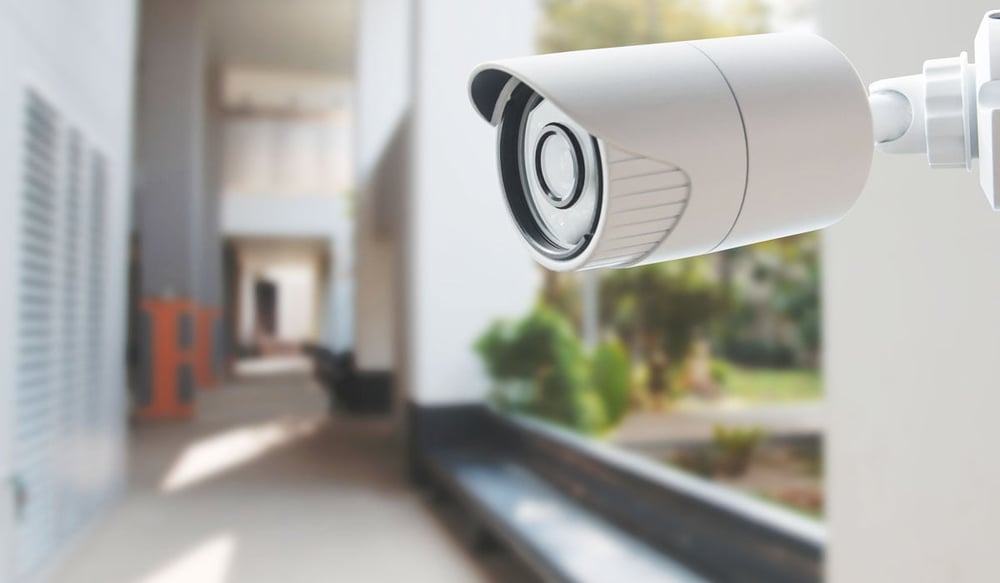Understanding CCTV Components: The Parts Every System Requires
Home Security Tips Security Cameras Security Systems Jan 30, 2023 1:19:06 PM General Security 4 min read

Editor’s Note: This blog post was originally published in March 2020 and has been revised to reflect industry updates.
Closed-circuit television (CCTV) security systems are gaining popularity, especially as more and more commercial businesses combat rising property crimes, thefts, and internal fraud.
When installing any CCTV security system to safeguard any business, basic components should include: cameras, recording systems, monitors, video management software (VMS), and other accompanying equipment.
Also referred to as video systems, CCTV technology can be added within commercial settings, schools, and small businesses. It can also assist law-enforcement agencies with crime prevention.
Here we review CCTV’s software, accessories, uses and applications, and more.
1. Consider CCTV Camera Types
There are two camera types for CCTV systems: Internet Protocol (IP) and analog. The former is the preferred choice due to its compatibility with most applications. An analog camera is best for a legacy digital recording system with older technology.
Both wired and wireless CCTV cameras are suitable for most applications. Operating via Power over Ethernet (PoE), wired is ideal for larger properties featuring multiple devices.
Consider wireless for smaller spaces not requiring several cameras or extended coverage, since these lack cumbersome wires and can be easily removed.
2. CCTV Recording Systems: NVR & DVR
Network video recorders (NVRs) and digital video recorders (DVRs) are the two most common models. Although DVRs are more prevalent, NVRs are actually a better fit for IP camera integrations and compatibility.
NVRs usually cost slightly more than DVRs, but the high-resolution of IP cameras typically outweigh the added expense.
IP & NVR: The Best Solution
Also referred to as video systems, CCTV technology can be added within commercial settings, schools, and small businesses. It can also assist law-enforcement agencies with crime prevention.
This combination provides wireless capabilities, offers superior picture quality, and needs fewer cables. Analog cameras require at least two cables per unit, are lower resolution, and pose installation challenges. These are best for older, existing systems.
To upgrade a current DVR system, you could transition to a hybrid solution, but it’s best to contact an experienced security provider for assistance.
3. Select a Single Monitor, Or Multiple
After settling on a camera and system, the next steps include selecting a monitor and supporting equipment, such as recording software. 1080p- or 4k-resolution cameras require a high-definition monitor for the sharpest details. Consider lower resolution components if you’re on a set budget, or have older cameras.
Deciding how many monitors is dependent on where and what you’ll be observing. Unless it’s a large-scale facility, three to five screens should be sufficient.
4. Consider VMS Systems
Cameras, recording systems and monitors comprise a solid CCTV system—but there’s more! Another important consideration is VMS to control NVR or DVR systems.
Business-grade security solutions differ from basic, at-home DVR systems, but such high tech can also help find, isolate, and extract the most critical information. Options will vary based on compatible NVR or DVR technology.
5. Cables, Power Supplies & Routers
Depending on the particular CCTV system, various supporting technologies are necessary for seamless integration. Analog cameras require a coaxial cable and additional power cable to connect to a DVR, for example.
IP cameras can connect to the NVR recording center for PoE from one cable. Wireless systems also require a router, while wired versions do not.
CCTV Best Uses & Applications
Mainly used for commercial properties and public safety, CCTV is also suitable for larger residential properties requiring additional cameras and network coverage. An Alarm.com CCTV system is also compatible with Business Activity Analytics integration. This includes invaluable insights such as heat mapping, occupancy and people counting, crowd data gathering, and queue monitoring.
Note the following use cases and associated diagnostics:
- Retail Storefronts & Interior Areas: To Deter Criminal Activities & Monitor Employee Productivity
- Parking Garages: Monitor & Protect Against Intrusions, Theft & Vandalism
- Warehouses/Loading Docks: Review Shipping/Receiving Protocols & Deliveries
- Casinos/Hotels: Deter Theft & Fraud
- Restaurants/Bars: Manage Front- & Back-of-House Activities
- Office Environments: Employee Activity & Productivity Surveillance
- Stadiums: Monitor Crowd Control & Occupancy Counting
- Public Safety: Assist Law Enforcement During Criminal Investigations & Traffic Studies
CCTV Technology Assistance Is Available!
If you’re still seeking guidance, it’s best to contact an experienced and knowledgeable provider such as General Security to help select the best CCTV system for your budget and needs.
General Security provides feature-rich CCTV systems protecting businesses of all industries and sizes. Request a free quote from us today!
